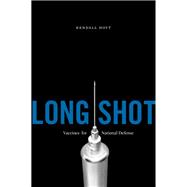
Note: Supplemental materials are not guaranteed with Rental or Used book purchases.
Purchase Benefits
What is included with this book?
| Introduction | p. 1 |
| Disease, Security, and Vaccines | p. 11 |
| Historical Patterns of Vaccine Innovation | p. 32 |
| Vaccine Development during World War II | p. 49 |
| Wartime Legacies | p. 81 |
| The End of an Era | p. 110 |
| Biodefense in the Twenty-First Century | p. 142 |
| The Search for Sustainable Solutions | p. 160 |
| Appendices | |
| Vaccine License Data, 1903-1999 | p. 180 |
| Developmental History of Vaccines Licensed in the United States, 1903-1999 | p. 230 |
| Military Contributions to Licenses Representing Innovative Activity | p. 244 |
| Notes | p. 251 |
| Acknowledgments | p. 287 |
| Index | p. 289 |
| Table of Contents provided by Ingram. All Rights Reserved. |
The New copy of this book will include any supplemental materials advertised. Please check the title of the book to determine if it should include any access cards, study guides, lab manuals, CDs, etc.
The Used, Rental and eBook copies of this book are not guaranteed to include any supplemental materials. Typically, only the book itself is included. This is true even if the title states it includes any access cards, study guides, lab manuals, CDs, etc.